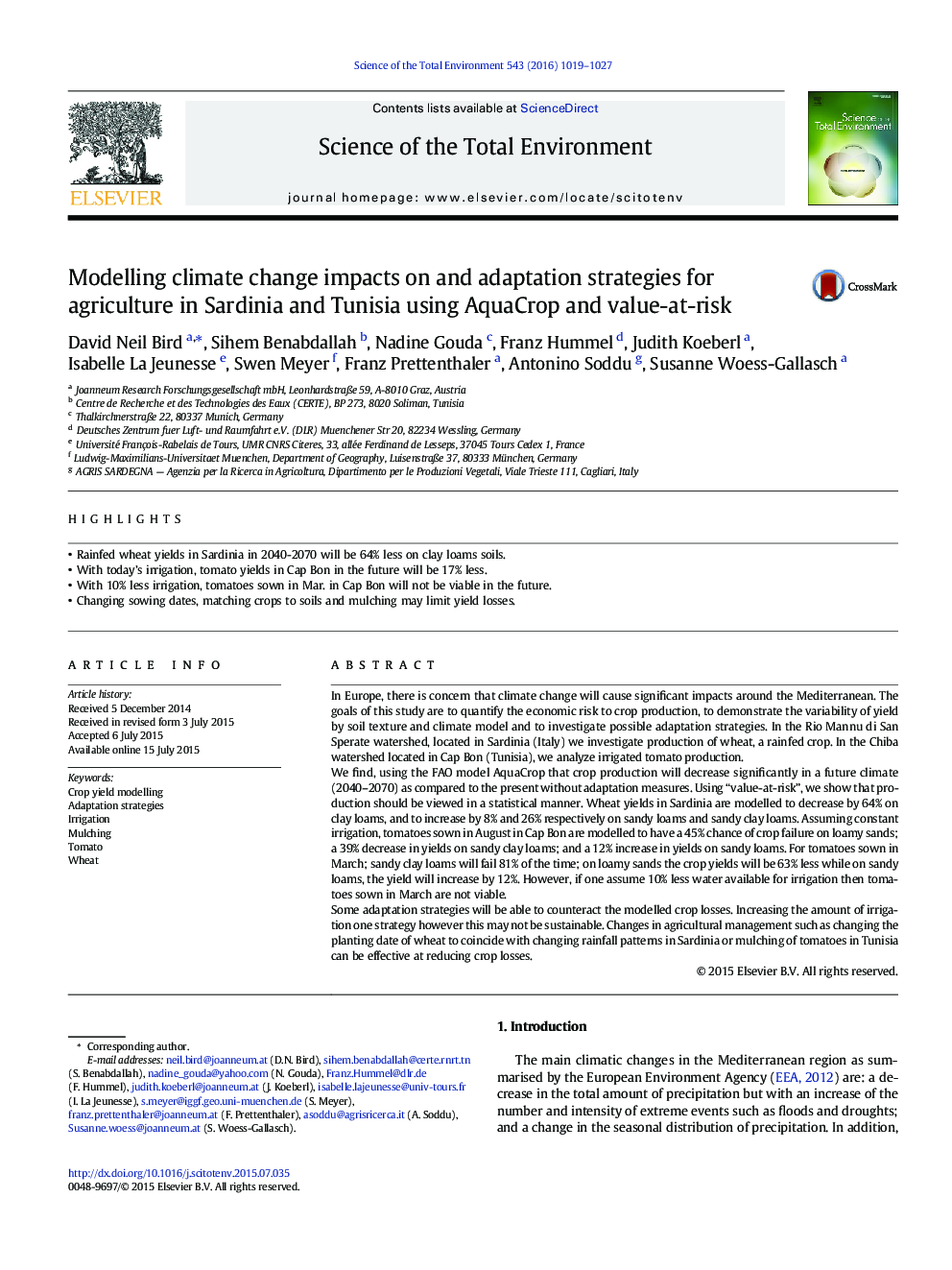| کد مقاله | کد نشریه | سال انتشار | مقاله انگلیسی | نسخه تمام متن |
|---|---|---|---|---|
| 4428321 | 1619739 | 2016 | 9 صفحه PDF | دانلود رایگان |
• Rainfed wheat yields in Sardinia in 2040-2070 will be 64% less on clay loams soils.
• With today’s irrigation, tomato yields in Cap Bon in the future will be 17% less.
• With 10% less irrigation, tomatoes sown in Mar. in Cap Bon will not be viable in the future.
• Changing sowing dates, matching crops to soils and mulching may limit yield losses.
In Europe, there is concern that climate change will cause significant impacts around the Mediterranean. The goals of this study are to quantify the economic risk to crop production, to demonstrate the variability of yield by soil texture and climate model and to investigate possible adaptation strategies. In the Rio Mannu di San Sperate watershed, located in Sardinia (Italy) we investigate production of wheat, a rainfed crop. In the Chiba watershed located in Cap Bon (Tunisia), we analyze irrigated tomato production.We find, using the FAO model AquaCrop that crop production will decrease significantly in a future climate (2040–2070) as compared to the present without adaptation measures. Using “value-at-risk”, we show that production should be viewed in a statistical manner. Wheat yields in Sardinia are modelled to decrease by 64% on clay loams, and to increase by 8% and 26% respectively on sandy loams and sandy clay loams. Assuming constant irrigation, tomatoes sown in August in Cap Bon are modelled to have a 45% chance of crop failure on loamy sands; a 39% decrease in yields on sandy clay loams; and a 12% increase in yields on sandy loams. For tomatoes sown in March; sandy clay loams will fail 81% of the time; on loamy sands the crop yields will be 63% less while on sandy loams, the yield will increase by 12%. However, if one assume 10% less water available for irrigation then tomatoes sown in March are not viable.Some adaptation strategies will be able to counteract the modelled crop losses. Increasing the amount of irrigation one strategy however this may not be sustainable. Changes in agricultural management such as changing the planting date of wheat to coincide with changing rainfall patterns in Sardinia or mulching of tomatoes in Tunisia can be effective at reducing crop losses.
Journal: Science of The Total Environment - Volume 543, Part B, 1 February 2016, Pages 1019–1027
